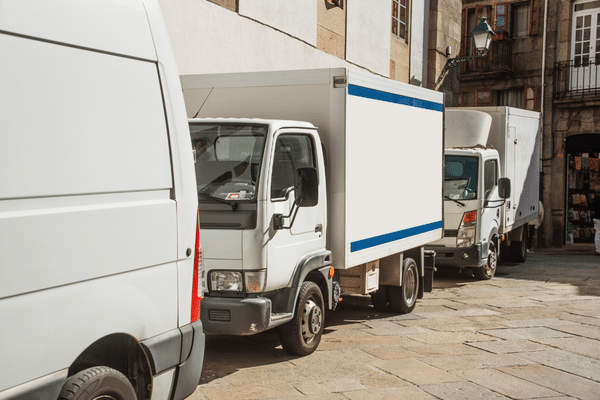As the majority of ecommerce consumers have grown to expect fast, free shipping options, more companies are being pressured into providing this level of service to stay competitive. In order to do so, many high-volume shippers look for opportunities to correct any inefficiencies under their control and decrease their shipping costs. One of the key areas companies are looking toward for assistance are last mile delivery solutions.
What is Last Mile Delivery?
Last mile delivery is the final step in the shipping process where a package is taken from its local transportation warehouse or hub to its final destination, and – in contrast with its name – spans much more than a single mile. It’s at this stage that parcel carriers face the greatest variety of challenges, as well as the highest expense they see in the process where 53% of a shipment’s total cost can be attributed to last mile delivery logistics alone. This step is critical to customer satisfaction in both D2C and B2B situations, especially as faster shipping becomes the demanded standard.
Outsourcing Last Mile Logistics
For decades, the major parcel carriers were the first and only company to transport and deliver a package upon receiving it from the shipper. However, as the industry’s shipping volume grew and ecommerce became a contender in both D2C and B2B supply chains, common inefficiencies seen during the final mile of shipping became serious enough to warrant a new solution. Shipping professionals saw this opportunity and either left their employers to create their own independent last mile logistics companies or introduced a final mile service in their company.
Which Carriers Use Last Mile Delivery Companies?
It may surprise you to know that most major parcel carriers, including FedEx, UPS, and even Amazon use last mile distribution providers on a consistent basis. This may be in the form of independent contractors that drive branded vehicles and deliver solely for one carrier or companies with small fleets of unbranded vans that deliver for multiple carriers each day. However, we’ve seen announcements from both of the major carriers, including FedEx choosing to push more of its last mile deliveries to their new in-house service, FedEx Ground Economy.
While this type of outsourcing is common, the meteoric rise of Amazon and their overnight and 2-day shipping is often seen as the cause of the increase in last mile distribution companies. With this, parcel carriers now have more options for who they choose to work with, especially in the metropolitan markets.
USPS Last Mile Distribution Support
While overall mail volume has decreased over the last few decades due to the adoption of email and the internet, USPS continues to remain a preferred last mile delivery provider across the country. Depending upon the region and season, both FedEx and UPS defer to USPS to save money during the final mile of some shipments. Many international shipments also use USPS once it arrives in the states, relying on them to carry packages before and during last mile distribution.
Last Mile Delivery Optimization Opportunities
While shippers themselves have little influence over the last mile distribution process, there are still a variety of questions they can ask to understand if the carriers they choose are prioritizing improvements in this final stage.
- How often do you update your last mile tracking?
- Do you provide proof of delivery with your shipments?
- Do you plan your drivers’ routes to ensure quick delivery?
- How do you communicate last mile delivery with the recipient?
When a parcel carrier provides examples of how they’re optimizing their last mile distribution, you can rest easier knowing that you’re not being burdened with the overinflated costs of the final miles involved in the shipping process.
Diversifying Your Carrier Mix with Last Mile Logistics
With FedEx & UPS continuing to introduce high GRIs year after year, more shippers are turning to diversifying their carrier mix to offset the annual increase to their shipping costs. Last mile carriers, while limited in the range of their service, often come in at a lower rate and with fewer surcharges. These include Lasership and OnTrac, Butter Trucks, and XPO.
As a shipper, you may not have direct control over last mile logistics, but you can certainly arm yourself with the shipping data you need to counterbalance any final mile costs your carrier may pass on. With Reveel, you can gain access to your own Shipping Intelligence dashboard so you can efficiently monitor your agreements, see how you compare to other shippers in your industry, and analyze shipping costs, including those shared by your carrier associated with last mile distribution. Chat with us to get started today.
The Reveel App uses AI and machine learning to provide an unparalleled look into what’s impacting your bottom line. Through invoice audits, AI and Machine Learning technology, and rate modeling/simulations, you can see the health of your operation and assess pricing changes from parcel carriers like FedEx and UPS. Get a demo of Reveel to see how you can leverage automation to synthesize your data, ship more for less, and reduce the time needed to identify issues and action items.




